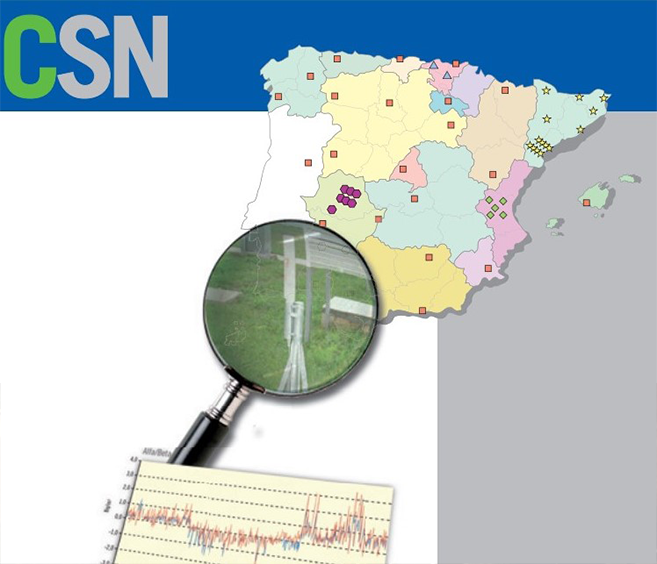

QUALITY ENVIROMENTAL MANAGEMENT
The commitment to respect the environment of CNAT is embodied in the organisation’s Environmental Policy. The Environmental Policy drives the application of the Environmental Management System and the continuous improvement of its performance, reflecting the Management’s commitment and constituting the guiding principle from which the annual programmes of objectives and, in general, all the company’s activities in relation to the Environment are derived.

ENVIRONMENTAL POLICY
CNAT’s environmental policy has been defined in accordance with the purpose and context of the organisation, including the nature, magnitude and environmental impacts of its activities, products and services, constituting the guiding framework of the Environmental Management System and in which the environmental objectives are established and reviewed. It guarantees the following commitments:
• Fully integrate the environmental dimension into the organisation’s strategy, to ensure the protection of the environment, the natural surroundings and the prevention of pollution.
• Continuous improvement in all processes that may have an environmental impact.
• Knowing and assessing the environmental opportunities and risks of the activities carried out, to ensure the achievement of the expected results.
• Comply with the binding environmental legislation and other requirements voluntarily subscribed to, maintaining an attitude of permanent compliance with them.
• Integrate environmental management into all activities and levels of the organisation, including design, supply, operation and maintenance; identifying, preventing, controlling and minimising, as far as possible, environmental impacts in the development of these activities:
• USING raw materials and energy rationally, and minimising the generation of conventional and nuclear waste and effluents.
• AVOIDING improper waste stockpiling and effluent disposal in unauthorised manner and places.
• CONSIDERING the development or application of new technologies to improve efficiency in electricity generation, environmental research and the promotion of energy saving.
• Motivate, inform and train staff to respect the environment, stimulating the development of an environmental culture and disseminating the Environmental Policy inside and outside the Organisation, including collaborating companies.
• To report transparently on environmental results and actions, maintaining the appropriate channels to encourage communication with stakeholders.
• Implement and maintain a standardised Environmental Management System.
LINES OF ACTION
In the environmental area, throughout 2020, CNAT has continued with the development of important actions included in the Environmental Management Programme, the most significant of which are listed below:
• Actions aimed at minimising the production of radioactive waste:
• Low and intermediate level waste: optimisation of the design to avoid the undesired generation of radioactive waste in certain operations, strengthening of processes for the declassification of materials (used oil, activated carbon, earth, metals and others), installation of equipment for the destruction of compactable waste, and improvements in the management of used oil and grease waste in a controlled area by means of centrifugation.
• High level waste: actions are also under way to reduce high level radioactive waste by means of new cycle management at Trillo NPP and reduction of the volume of special wastes (fuel heads) located in the spent fuel pool at Almaraz NPP for subsequent management as LILW. Almaraz NPP for subsequent management as Low and Medium Activity Waste.
• Creation of an interdepartmental group for the minimisation of hazardous and non-hazardous waste generation at both plants.
• Improvement in pollution prevention systems: conditioning of the storage area for reserve transformers at Almaraz NPP.
• Improvement of the thermo-ecological conditions of the Arrocampo reservoir, through the progressive repair of sections of the thermal separation screen at Almaraz NPP and optimisation of discharge water temperature control.
• Improvements in the data acquisition of the EM-02 meteorological tower.
• Carrying out environmental awareness campaigns aimed at promoting good environmental practices.

ENVIRONMENTAL AUDITS
CNAT has had its Environmental Management System certified by AENOR since 2005, in accordance with the international standard UNE-EN-ISO-14001:2015. From 21st to 24th September 2020, the Environmental Management System Certification Renewal Audit was carried out by AENOR INTERNACIONAL S.A.U. The auditors reviewed the Almaraz and Trillo plants and the activities carried out at the Central Offices, with a final result of “compliant assessment”.
The Environmental Management Certificate, after fifteen years of validity, has been renewed in 2020 with validity until 28/11/2023, thus recognising the involvement of the Management and the collective effort of the entire Organisation, carried out throughout these years. Each milestone of this nature should be understood, however, as a new starting point towards a better environmental performance of the company.
Previously, in May, the internal audit of the system had been carried out, which forms part of the verification process required by the system, and no non-conformities were detected.
The Nuclear Safety Council carried out a number of inspections at both plants on various environmental matters.

ENVIRONMENTAL MONITORING PROGRAMMES
CNAT have historically carried out various environmental surveillance programmes aimed at verifying the absence of significant environmental impacts as a result of their activities, in both the radiological and conventional fields.
Study of aquatic ecosystems
In the area surrounding the Almaraz power plant, two main environmental studies are being carried out, the scope of which includes the Arrocampo and Torrejón reservoirs: the Ecological study of the aquatic ecosystem and the Thermal study of the reservoirs.
These monitoring studies are far-reaching due to the fact that the Arrocampo reservoir should also be considered as another system of the plant, since it was built exclusively for industrial use for the cooling of Almaraz NPP and is therefore used for final heat dissipation. It is therefore necessary to have the most precise knowledge possible of its characteristics in terms of its capacity to perform its cooling function, both in the short and long term. This requires intensive control and monitoring of both physico-chemical parameters, especially temperature, and biological parameters.
The environmental study being carried out in the area surrounding the Trillo power station currently consists of monitoring the Tagus river, into which the plant discharges, and the Entrepeñas reservoir, located downstream in the vicinity of the plant.
The scope of the study includes the assessment of water quality from the physico-chemical point of view and its content of metals and other undesirable substances, as well as the characteristics of other elements of the aquatic ecosystem such as sediments, benthic algae, phyto- and zooplankton and ichthyofauna.
Environmental radiological monitoring
The Almaraz and Trillo plants carry out continuous and strict control and surveillance of their own radioactive effluent releases. Nevertheless, in order to experimentally verify the impact that radioactive effluents might have on the environment, the plants carry out an Environmental Radiological Monitoring Programme (ERSP) through the direct measurement of radiation levels in the vicinity of the facilities and of the radioactive substance content of a series of environmental samples collected at a set of sampling points.
All abiotic elements and living beings representative of the ecosystems linked to all natural environments around the plants (aerial, terrestrial and aquatic) are fully monitored.
The goodness of the analytical results is ensured by the parallel performance of a quality control programme by another laboratory independent from the main laboratory and by the performance of an independent surveillance programme (PVRAIN) carried out directly by the Nuclear Safety Council.
Furthermore, in the case of the Almaraz plant, a collaboration agreement has been entered into with CEDEX (Public Works and Experimental Studies Center) for this official organisation, which reports to the Ministry of Public Works, to carry out independent monitoring of the aquatic environment around the plant. The Regional Government of Extremadura also carries out independent radiological surveillance through the University of Extremadura.
The results obtained during the year 2020 at both plants indicate that the radiological status of the surrounding ecosystems has not undergone significant variations during the year, with the natural background values remaining unchanged, confirming the absence of environmental effects due to the release of radioactive effluents, a fact to be expected given the practically insignificant radiological relevance of the releases carried out by both plants.
Meteorological studies
The Almaraz and Trillo plants have weather stations that continuously measure and record the most significant parameters such as temperature, precipitation, wind direction and speed, humidity and solar radiation. Meteorological information is of special relevance for various applications related to the environment, and a very good characterisation of the climate at the sites is available after more than thirty years of monitoring.
The stations have the necessary redundancies to ensure the continuous availability of meteorological information.





